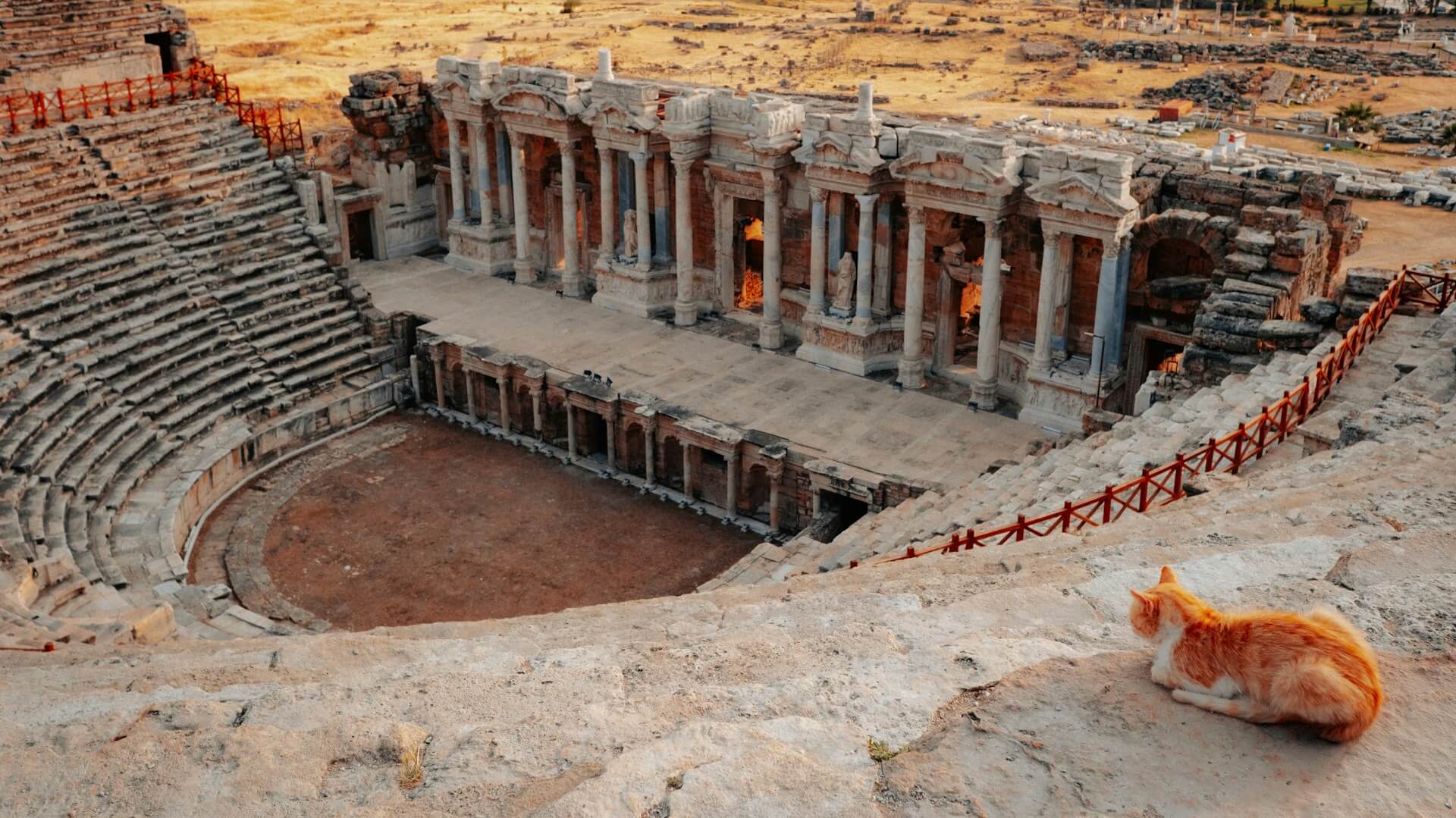Types of attractions in Pamukkale
Pamukkale, known for its stunning white travertine terraces and rich historical heritage, offers a unique blend of natural beauty and cultural significance. The city's attractions encompass a variety of types reflective of its diverse charm.
HistoricalPamukkale is home to the ancient city of Hierapolis, a UNESCO World Heritage site that boasts well-preserved ruins, including a Roman theater and ancient baths. These ruins reveal a glimpse into the life of the past.
NaturalThe main draw of Pamukkale is, of course, its travertine terraces filled with thermal waters. The stunning white formations, created by calcium deposits, offer breathtaking views and a unique opportunity to bathe in natural hot springs.
ReligiousThe historical significance extends to the temple of Apollo in Hierapolis, which served as a religious center in antiquity. Visitors can explore the remnants of this ancient sanctuary.
CulturalCulture in Pamukkale can be seen in the famous Cotton Castle, a natural wonder attracting visitors with its unique geological formations, as well as the traditions retained by the local community.
MuseumsThe Hierapolis Archaeology Museum showcases artifacts from the ancient city and surrounding areas, providing insight into the region’s rich history.
EntertainmentAlongside its historical and natural attractions, Pamukkale hosts various entertainment offerings, including thermal spas and wellness centers that embrace the area's healing waters.
Must-see landmarks in Pamukkale
The landmarks in Pamukkale are quintessential to understanding the city's identity, drawing visitors due to their historical significance and natural beauty.
- Travertine Terraces: The standout feature, these terraces offer stunning views and unique thermal baths.
- Hierapolis Ancient Theatre: A well-preserved Roman theater capable of seating up to 15,000 visitors, showcasing the magnificence of ancient architecture.
- Cleopatra's Pool: A historic thermal pool said to have been frequented by Cleopatra herself, complete with sunken columns.
- Hierapolis Archaeology Museum: Housed in a Roman bath, it presents an impressive collection of artifacts, enriching the historical narrative.
- Devil’s Hole: A fascinating geological feature associated with ancient beliefs, adding a mystical aspect to the landscape.
- Temple of Apollo: An important site where ancient rituals took place, reflecting the spiritual heritage of Hierapolis.
Attractions for families and kids
Pamukkale is an excellent destination for families, providing various engaging activities for children of all ages. The mix of natural wonders and cultural sites offers fun and educational experiences.
- Pamukkale Travertines: Children will love exploring the shallow pools of warm water while learning about the science behind the travertine formation.
- Cleopatra’s Pool: A great spot for a family swim, where kids can splash around and enjoy the mythical ambiance.
- Hierapolis Ancient Theatre: This grand structure serves as a stage for performances and events, allowing families to enjoy cultural activities together.
- Parks and Picnic Areas: Various green spaces in Pamukkale offer perfect spots for family picnics and leisurely outdoor activities.
- Natural History Exhibits: The nearby museum presents engaging exhibits that spark curiosity about nature and history among younger visitors.
- Adventure Parks: Thrilling parks nearby guarantee adrenaline-filled experiences suitable for older kids and teens.
Summer and winter attractions
Pamukkale transforms with the seasons, offering unique attractions and activities that reflect its natural beauty throughout the year.
SummerDuring the summer months, the warm weather invites tourists to enjoy the iconic travertine terraces. Visitors can soak in the pools while witnessing stunning sunsets over the calcium formations. Additionally, the thermal baths of Cleopatra's Pool offer a relaxing reprieve. Summer is also perfect for exploring the ruins of Hierapolis, including guided tours that provide insight into this ancient city.
WinterIn winter, Pamukkale experiences milder temperatures, making it an ideal time for exploration without the summer crowds. The travertines and surrounding landscapes can be particularly picturesque with a light dusting of snow. Visitors can also enjoy cozy thermal baths, which are especially inviting during colder days, while discovering the history of the ruins at a leisurely pace.
Visitor information and tickets
Planning your visit to Pamukkale is essential to fully enjoy its attractions. Understanding visitor information helps in making the most of your trip.
- Opening Hours: The travertine terraces are open daily from 6 AM to 8 PM in summer and 6 AM to 7 PM in winter.
- Ticket Prices: Entry to the travertines costs around 400 Turkish Lira, while Cleopatra’s Pool is an additional fee of 150 Turkish Lira.
- Free Attractions: Exploring the public areas around the travertines and Hierapolis can be done without an entry fee.
- Guided Tours: It is recommended to book guided tours online in advance for better rates and to ensure availability, especially during peak seasons.
- Accessibility: Paths are generally accessible for strollers, but some parts of the travertines can be slippery; protective footwear is advisable.
Photography and tourist info centers
Capturing the spellbinding beauty of Pamukkale is essential for creating lasting memories, and knowing where to find the best spots can enhance your experience.
- Best Photo Spots: The main travertine terraces at sunrise and sunset provide mesmerizing backdrops. Additionally, the ancient theater offers panoramic views of the landscape.
- Photography Rules: While photography is encouraged, flash photography in some areas (like museums) may be restricted; check signs.
- Tourist Info Center: Tourist Info Center: +90 258 272 2000, located at the entrance of the travertines, open daily from 8 AM to 7 PM.



